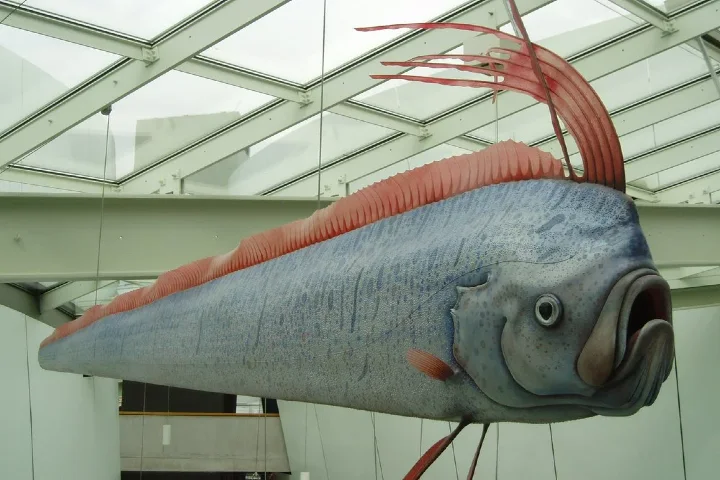At times Lady Luck smiles on scientists and researchers and allows them glimpse of something rare or unknown. One such event occurred when marine biologist Jorja Gilmore who on a snorkel tour at the Great Barrier Reef, Australia, came across a strange creature as per an article in smithsonianmag.com.
Right in front of her was an extended silvery fish which was as thin as paper. Intrigued and puzzled, she consulted Than Miller the master reef guide to know more about what she had seen.
Talking to 9News, Miller said: "At first I couldn't quite place what species of fish it was, but then I saw the shiny mercury-coloured body, two predominant eyes and the ultra-fine dorsal fin running head to tail, undulating like mini waves propelling through the water, I knew we had come across something rarely seen on the Great Barrier Reef. Luckily, I had my camera and started to film straight away.”
The guidebooks and those used for reference were not able to identify the that had mesmerised those on the snorkel tour. The team tapped the network of reef guides to find out. From one of them came the suggestion that it could be an oarfish – an evasive creature which is found in the deep ocean.
The scientists contacted Tyson Roberts who is an oarfish expert and worked at the Smithsonian Tropical Research Institute in Panama as a research associate. He confirmed that the fish they had seen and filmed was a juvenile Regalecus russelli.
R. russelli is one of the oarfish species whose length can go beyond 25 feet. The one filmed at the Great Barrier Reef had a body which was just one foot long but measured along with its fins it would be 3 to 6 feet.
Roberts talking to ABC observed: "This is the first record of this species on the Great Barrier Reef and on the eastern seaboard of Australia. There have been other oarfish recorded in south-eastern Australia, but they are the Regalecus glesne species, which lives in cold water and has two dorsal fin crests above the head, differing from the individual spotted at Opal Reef."
There have been instances when dead adult species of these fishes have been found on the beaches. Two Regalecus glesne were found in Southern California in 2013 within less than a week of one another. Cases of seeing them live are few and far between. In 2022, a 12-foot-long oarfish was sighted by beachgoers in New Zealand but this creature died shortly.
Oarfish are found from temperate ocean zones to tropical ones. Their habitat ranges from 660 feet to 3,300 feet and they are scarcely seen on the surface. Chances of seeing them alive are remote and when they come to the surface they die. Oarfish live at depths where there are either no currents or hardly any because of which they build little muscle mass and can’t survive in shallower turbulent water.
The Great Barrier Reef one was swimming at a depth of about 6 feet.
Miller recalling the incident told ABC: "It's amazing that the ocean still has secrets to reveal, just when you think you've seen it all, magic happens. There were about 40 people in the water that day and we were all very lucky to experience it."




















